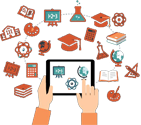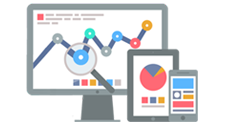
Digital Transformation trends changing education and the ways students learn
Personalized Learning

Blended Learning

Adaptive Learning

Student-led Learning

Gamification

Utilization of Cloud-Based Technology

Learning Data and Analytics

Artificial Intelligence
Artificial intelligence is fundamentally about making decisions based on data – and that describes much of education. Already, AI’s existing applications span the value chain, including search tools for scientific research, powering chatbots, connecting learners with universities, and matching students with career coaches.
Internet of Things
The Internet of Things comprises internet-connected devices that can communicate with each other
Chatbots and Virtual Assistants
Chatbots – software programs that simulate conversing with a human – have the potential to automatically handle routine queries, freeing up human staff to deal with more complicated problems.
Blockchains
Blockchain is an emerging technology that can be used to store and communicate information in a distributed, secure and efficient way. In the education space, institutions are experimenting with blockchain as a way to record credentials and potentially other student data such as assessments, achievement of learning and cocurricular accomplishments

